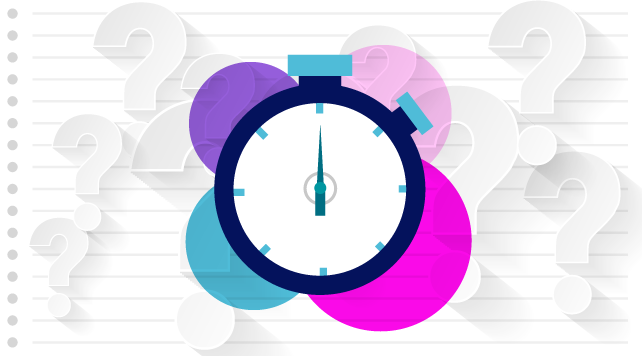ResearchKit Active Tasks List
ResearchKit is an open source framework introduced by Apple that allows researchers and developers to create powerful apps for medical research.
This article describes all Active Tasks available for developers and researchers in ResearchKit.
List of available active tasks
-
- Fitness
-
- Gait and balance
-
- Hand dexterity
-
- Paced Serial Addition Test (PSAT)
-
- Range of Motion
-
- Reaction time
-
- Spatial memory
-
- Stroop
-
- Sustained phonation
-
- Tapping speed
-
- Timed walk
-
- Tone audiometry
-
- Tower of Hanoi
-
- Trail Making
- Custom Active Task
DeepDive into ResearchKit Active Tasks
1. Fitness
In the fitness active task, the user is asked to walk for a specific period of time. During this duration sensor data using accelerometer, device motion, pedometer, location, and heart rate data is collected. After the walking period, the user is asked to sit down and rest for a specific duration during which the heart rate continues to be monitored. However, if the user is on a device which does not support heart rate monitoring, the rest phase of the test can be ignored.
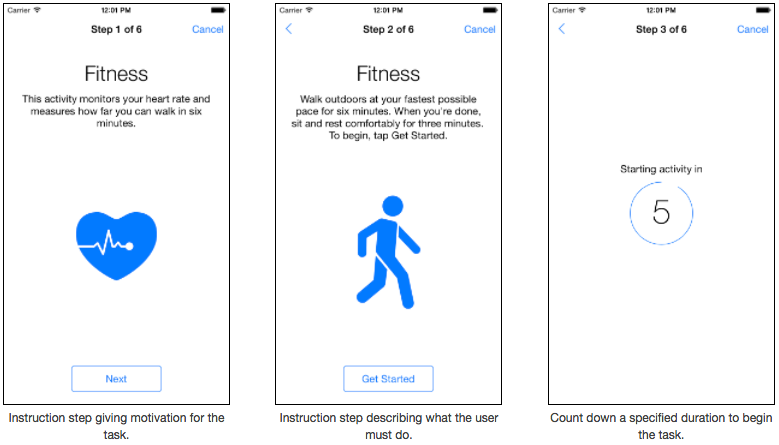
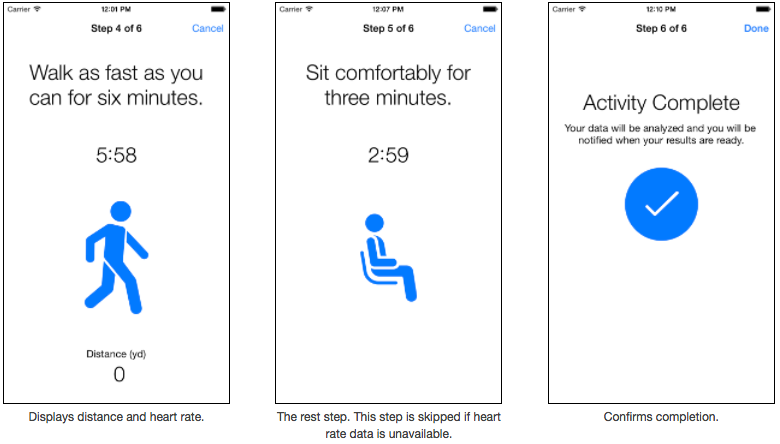
2. Gait and balance
This active task is mainly used to measure participant’s walking.
In gait and balance active task, user walks for some short distance, and we can measure stride length, smoothness, sway, and other aspects of the participant’s walk.
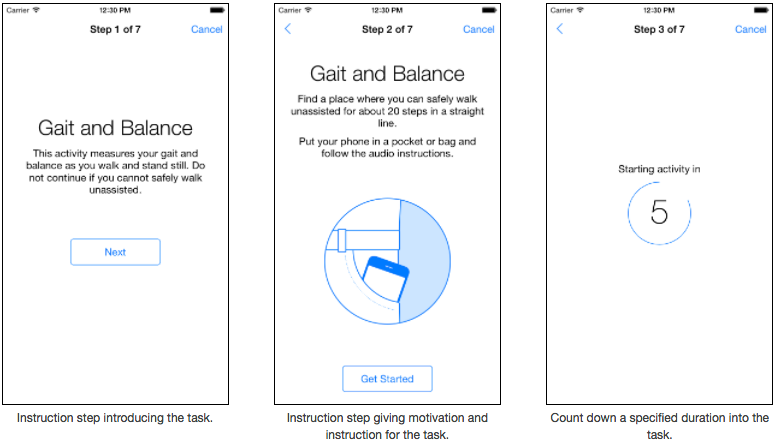
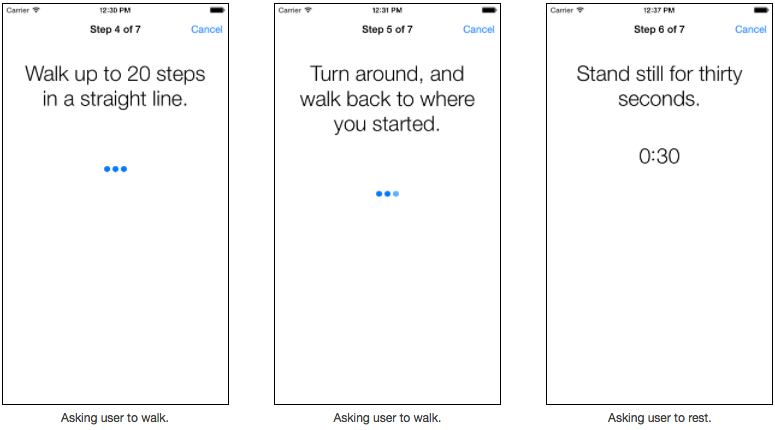
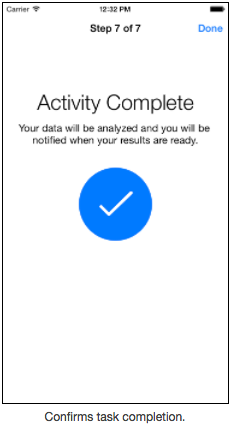
3. Hand dexterity (9-Hole Peg Test)
As the name suggests, this active task is mainly used to test dexterity of user’s hands. This task measures MSFC score in Multiple Sclerosis, Parkinson’s disease, or stroke. (Read more on MSFC here and here.)
As output data, this task gives number of pegs, list of move samples and time taken to complete the task. In this task participant has to put pegs in holes and then remove them.
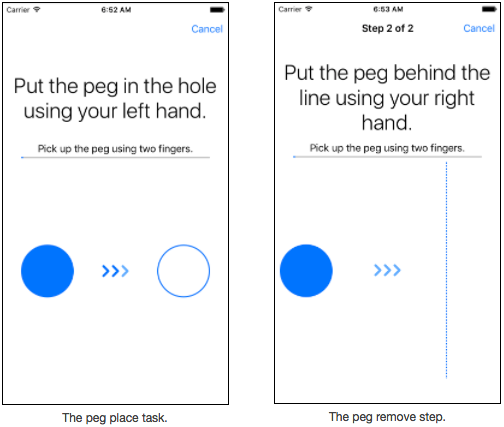
4. Paced Serial Addition Test (PSAT)
PSAT active task measures auditory and/or visual information processing speed and calculation ability of participants.
In this task, single digits are presented every 2 or 3 seconds and the user must add each new digit to the one immediately before.
There are 3 variations of this task.
-
- PASAT: Paced Auditory Serial Addition Test — the device speaks the digit every 2 or 3 seconds.
-
- PVSAT: Paced Visual Serial Addition Test — the device shows the digits on screen.
- PAVSAT: Paced Auditory and Visual Serial Addition Test — the device speaks the digits and shows it onscreen every 2 to 3 seconds.
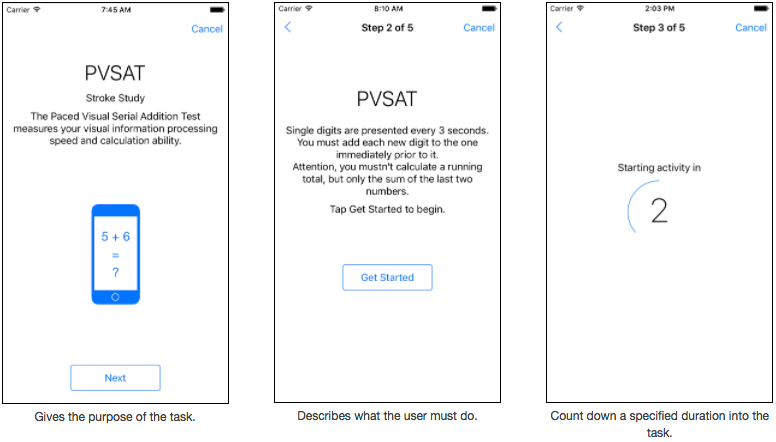
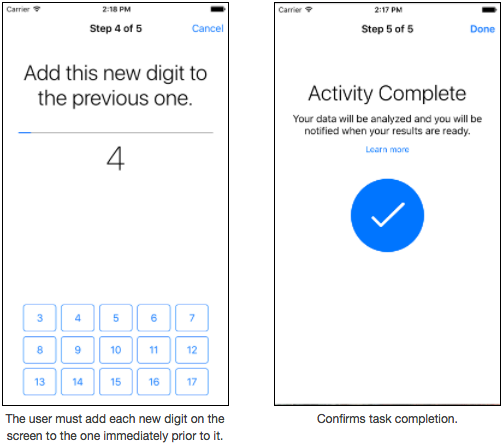
5. Range of Motion
This active task measures flexed and extended positions of the shoulder or knee. ResearchKit uses accelerometer and gyroscope data for calculations in this active task.
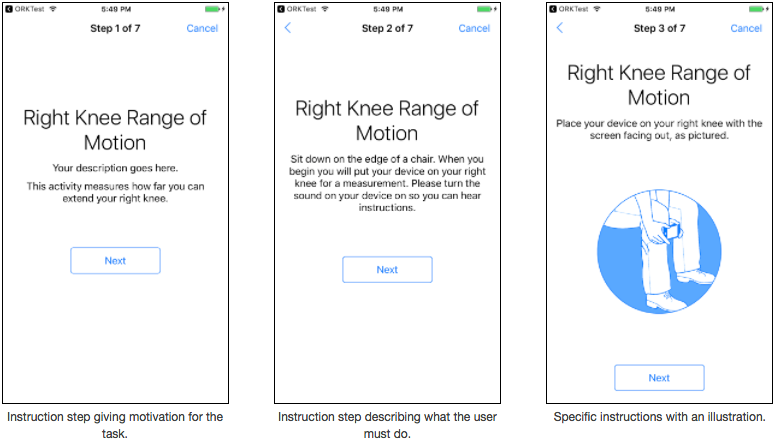
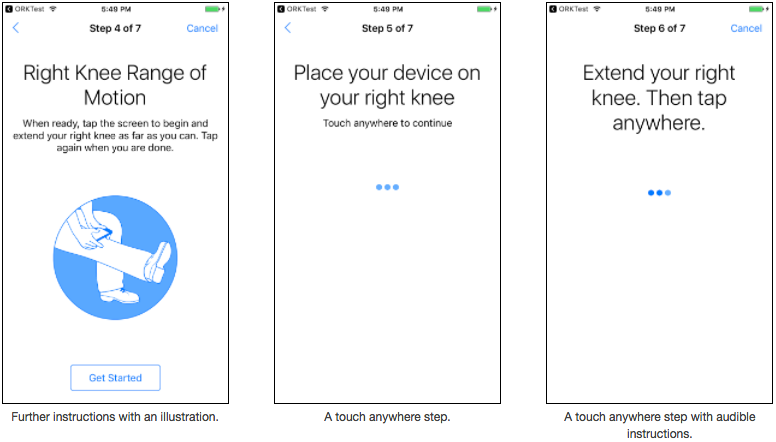
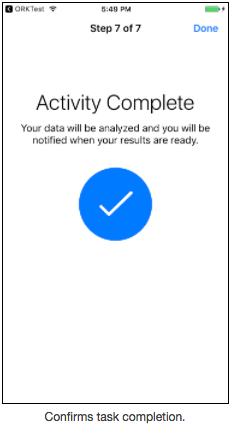
6. Reaction time
Participant is asked to shake the device when he/she sees a visual clue on the device screen.
This task is divided into number of attempts and user has to complete all tasks for completion. This evaluates user’s response to stimulus and calculates reaction time.
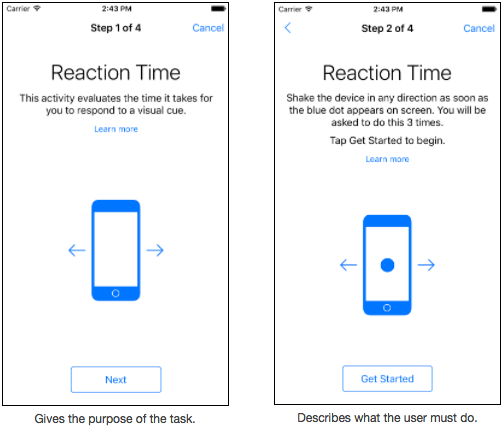
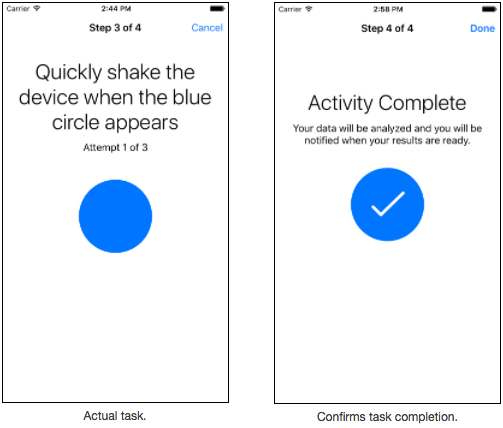
7. Spatial memory
In this active task, user is asked to remember the pattern sequence that appears on screen, and then recall the pattern sequence.
The length of the pattern sequence varies and the task progresses in a game-like environment. For example, initially 3×3 matrix comes up then 4×4 and so on.
The task collects data that can be used to assess visuo-spatial memory and executive function.
The span of 3×3 to 4×4 or 2×2 automatically varies during task, i.e. Increasing after successful completion of sequence or decreasing after failures.
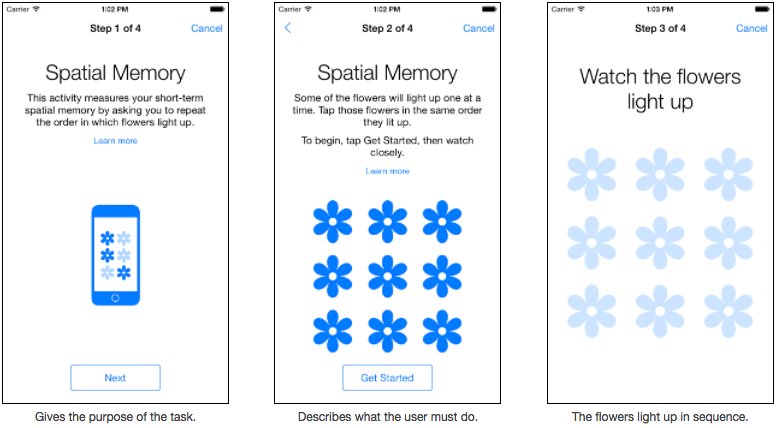
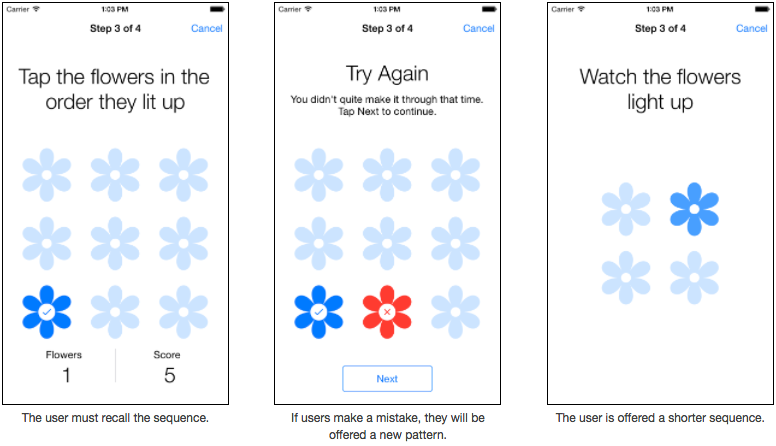

8. Stroop
In Stroop active task, user has to select the first letter of name of the color which is shown.
For example, in the below example “YELLOW” text is shown in blue color, hence user has to select B from given options in order to complete this active task.
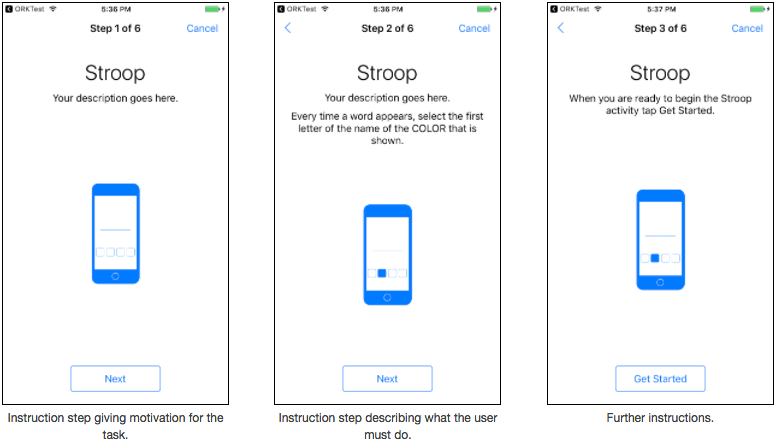
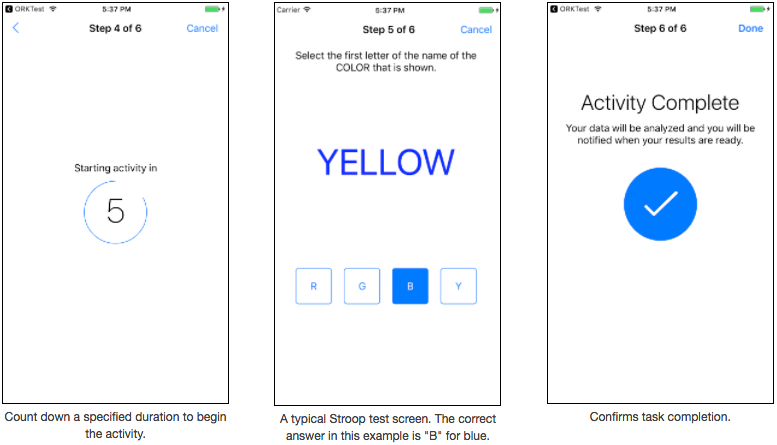
9. Sustained phonation
In this active task, user makes a sustained sound and that sound is recorded.
This active task shows power spectrum of sound volume during recording, but data analysis is not done by ResearchKit. Developer/researcher has to analyse audio themselves.
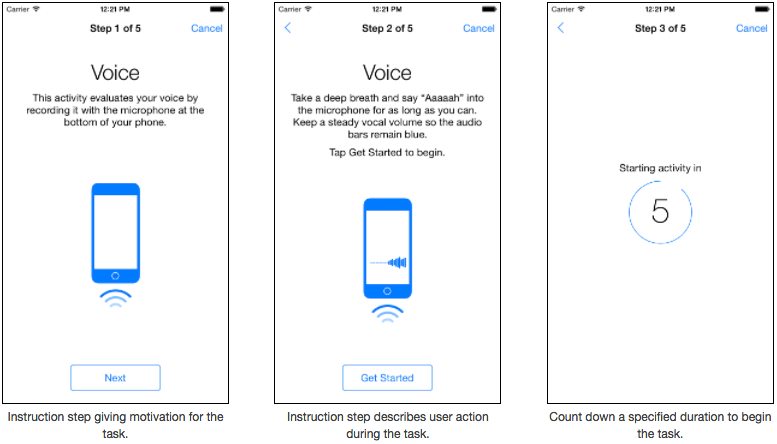
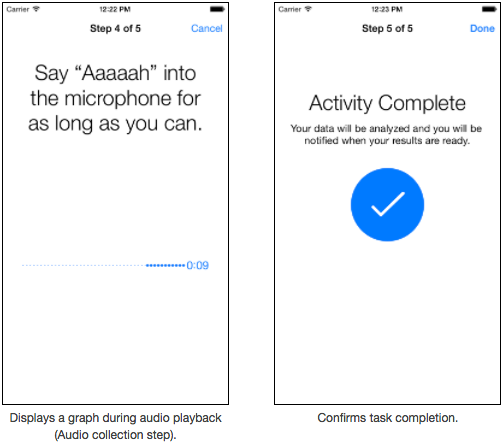
10. Tapping speed
Tapping speed active task is used to determine rapid tapping speed of participant on touch screen. The collected touch data can be used to assess motor capabilities such as speed, accuracy, and rhythm.
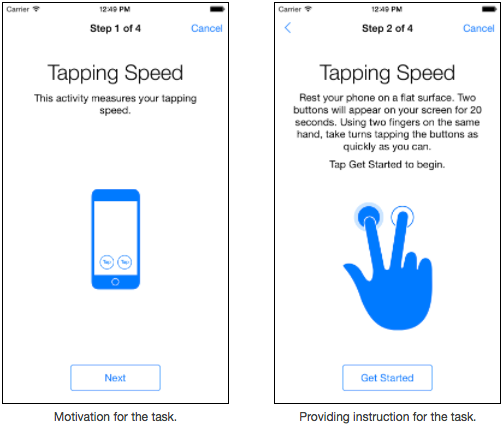
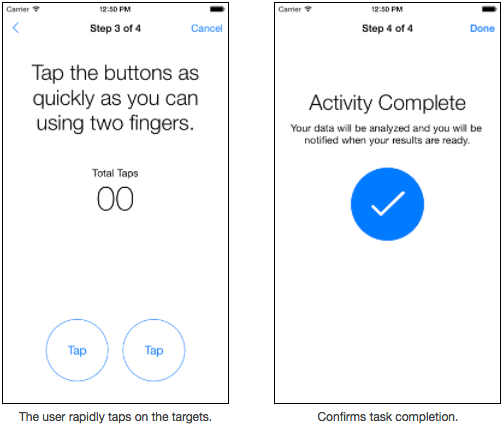
11. Timed walk
User is asked to walk swiftly and safely for a specific distance, then user is asked to walk in an opposite direction for the same distance. The timed walk task differs from both the fitness and the short walk tasks in that the distance walked by the user is fixed.
A timed walk task measures the user’s lower-extremity function.
The data collected by this task includes accelerometer, device motion, pedometer data, and location of the user. Note that the location is available only if the user agrees to share their location.
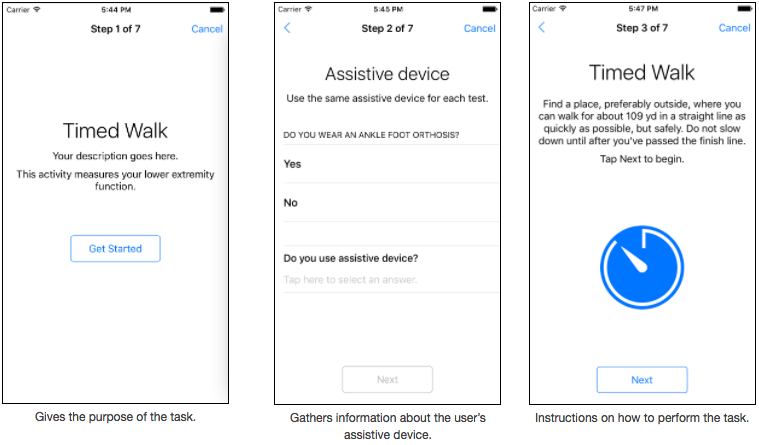
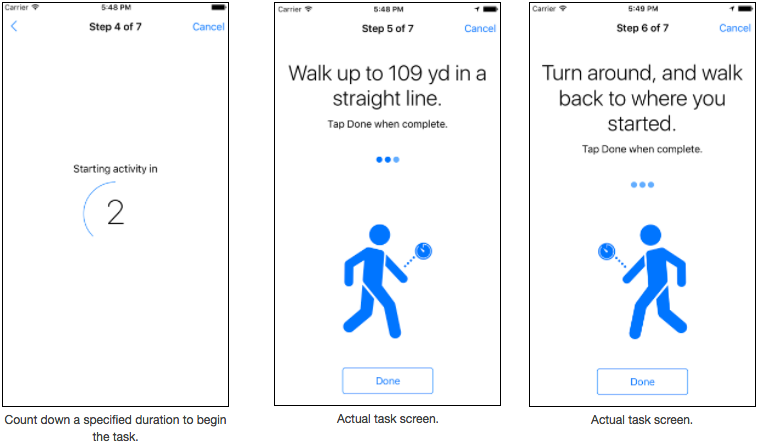
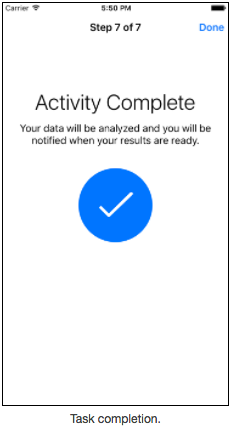
12. Tone audiometry
In this active task, participant uses headphones and listens to different frequencies in both ears. When participant hears any sound, they click on left or right button on device screen according to sound heard in right or left ear.
These tones are of different audio frequencies, playing on different channels (left and right), and the volume is progressively increased until the user taps on one of the buttons.
A tone audiometry task measures different properties of a user’s hearing ability, based on their reaction to a wide range of frequencies.
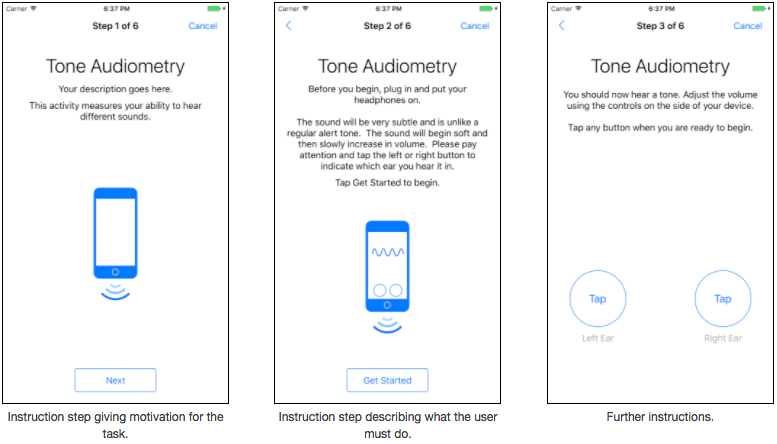
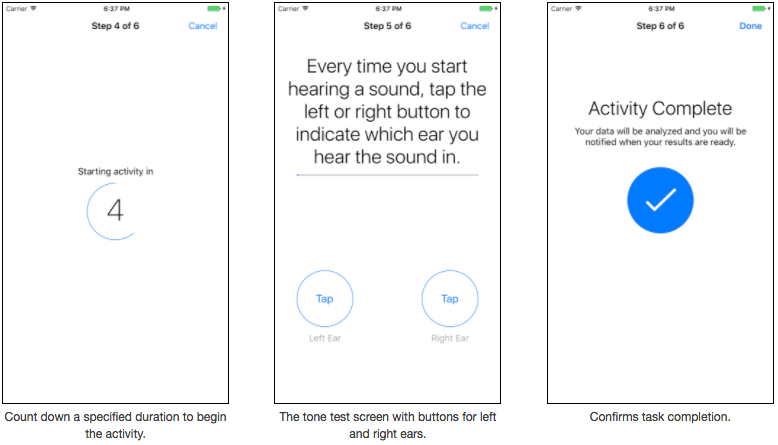
13. Tower of Hanoi
In the Tower of Hanoi active task, the user is asked to solve the classic Tower of Hanoi puzzle in a minimum number of moves.
To solve the puzzle, the user must move the entire stack to the highlighted platform in as few moves as possible. This task measures the user’s problem solving skills. A Tower of Hanoi task finishes when the user completes the puzzle correctly or concedes that they cannot solve the puzzle.
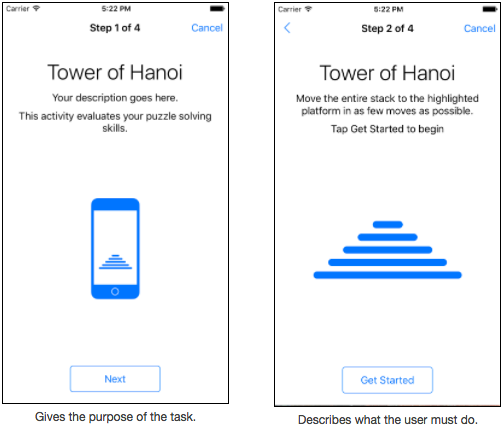
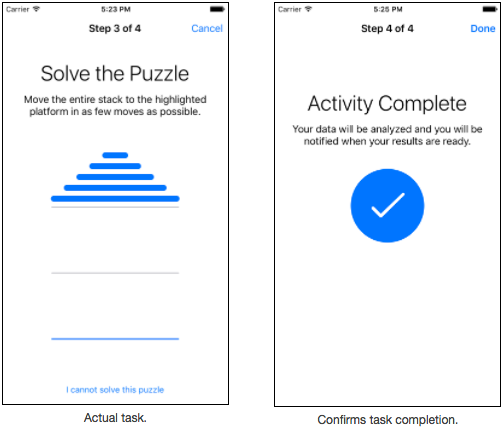
14. Trail Making
In the trail making active task, the participant connects a series of labelled circles, in correct order. The time to complete the active task is recorded.
The circles can be labelled with sequential numbers (1, 2, 3,..) or with alternating numbers and letters (1, a, 2, b, 3, c…).
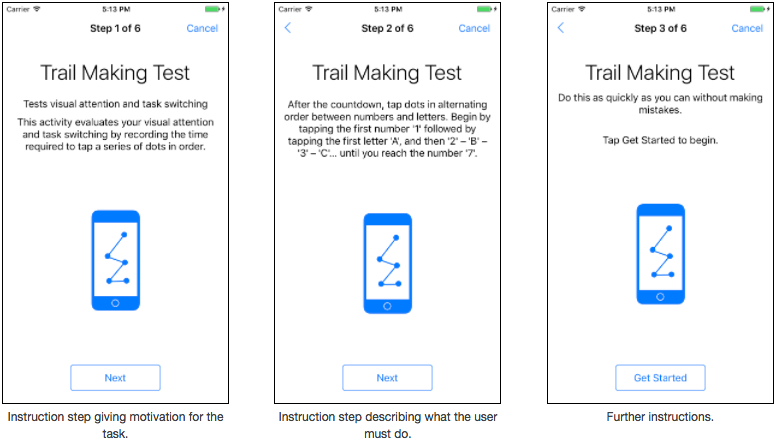
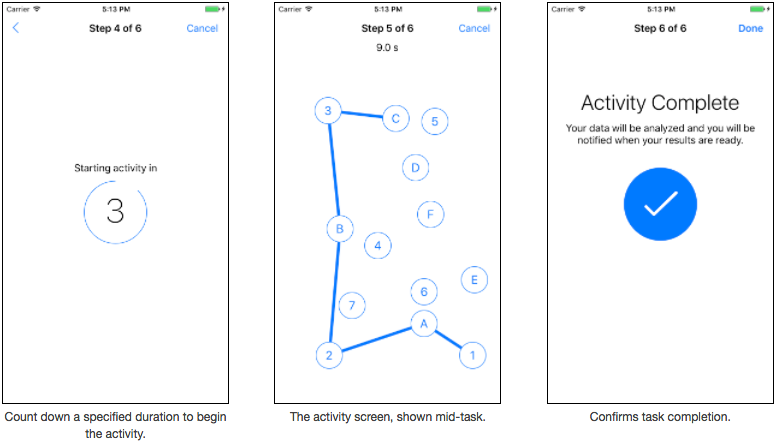
15. Custom active task
Developers/Researchers can create custom active tasks by subclassing classes provided in ResearchKit framework.
It is recommended to use predefined classes if they are already available.
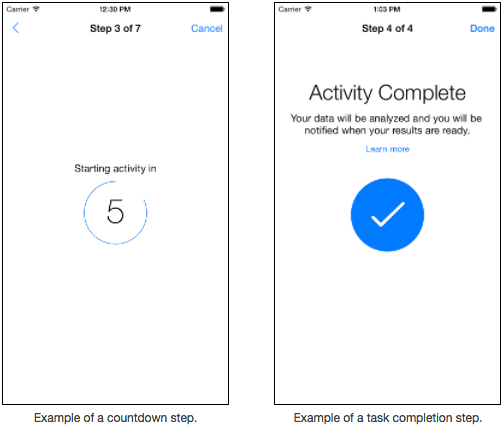
Just signup -> Provide research QA and details -> Publish an app to Apple AppStore and Google PlayStore.
Contact us for more details.

